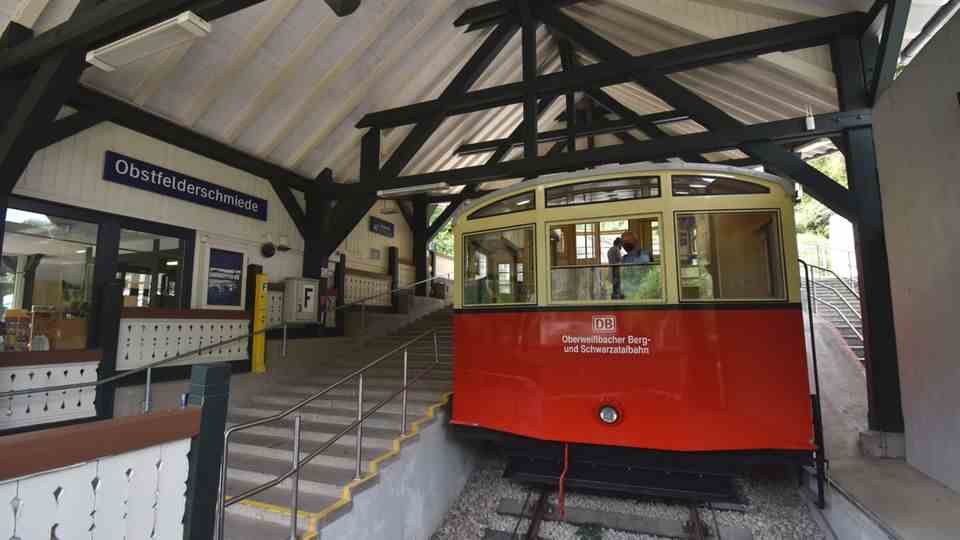Balance sheet after three months
The €9 ticket has lured millions onto trains and buses. A mobility revolution? Without a cheap follow-up offer, unfortunately no
This summer, the 9-euro ticket ensured full, sometimes overcrowded, regional trains. After the end of the campaign, the trains and buses in local transport should empty again
© IMAGO/Frank Sorge
For three months, people in Germany could travel cheaply throughout the country with the 9-euro ticket. The offer expires next week. What did it bring? A survey provides insights.
Deutsche Bahn sold 26 million 9-euro tickets through its own channels alone, as announced on Sunday. How many people used the offer in total is still unclear because the figures from the regional transport associations are still missing. There, too, the tickets were sold or issued to season ticket holders. So there should be a few million more. The offer ensured that Germany was talking about local transport, was the group’s happy Twitter message. The company thanked its own employees for their “strength” in order to make the summer possible to the fullest.
The fact that the employees of the railways, according to their unions, are initially very happy that the offer will expire next week is another matter. First of all, according to the good news, countless people discovered public transport for the first time. So is the 9-euro ticket the start of a real turnaround in mobility? Away from the pandemic winner car and towards public transport?
If you look at the most recent survey by the German Aerospace Center (DLR) on the 9-euro ticket, you come to the conclusion: rather no. The DLR Institute for Transport Research surveyed around 2,500 people between the end of June and mid-July 2022. The results do not exactly inspire hope that the effects will be sustainable.
Great encouragement, but little desire to stay
The offer was very popular and, according to DLR project manager Claudia Nobis, has “arrived in mainstream society”. And still: A little more than 60 percent stated that the ticket was a good reason to leave the car at home. However, only nine percent of the ticket holders surveyed stated that they expect to use public transport more frequently after the campaign has ended.
The people who use the ticket would have represented the social average more in terms of age, education, profession and gender than classic season ticket users, but the situation is different when it comes to where they live. The users of the campaign ticket therefore live more often in larger cities. On the other hand, those who were not interested in the 9-euro ticket were often at home in the countryside, where local transport is often much worse and there is often no sign of improvement.
Three quarters of the ticket holders used it for journeys within a radius of up to 50 kilometers from their own place of residence. A quarter only traveled longer distances. It may have played a major role here that the cheap ticket helped people with a smaller budget in particular to get mobility and certain journeys in the first place. It also fits the picture that 60 percent of those surveyed used the ticket for excursions and leisure activities at the weekend. At 18 percent, a comparatively small proportion used the ticket to get to work.

Purposes of use of the 9-euro ticket
© Graphic: stern / Data: DLR study
After the 9-euro ticket: a good follow-up offer is important
In addition to the price, another advantage of the 9-euro ticket is that it is valid nationwide. According to the DLR survey, around 70 percent of all respondents considered it a very attractive offer with clear and easy-to-understand terms and conditions. It saves dealing with the sometimes very different tariff offers of the individual transport operators and associations. Keeping an overview in this jungle of prices and validity can be a Gordian knot that was broken by the campaign ticket for at least three months. Many holders of a 9-euro ticket are also not willing to buy monthly tickets at the normal price after the offer has expired. Further use of public transport makes them heavily dependent on the price offer.
Conclusion: In order to keep people using local public transport even after the 9-euro ticket, a well-developed, easy-to-understand and, above all, inexpensive public transport offer would still be needed. And unfortunately that is not in sight in many places at the moment.
Sources: Train (Twitter), DLR, Deutschlandfunk
In the gallery: The heritage-protected funicular leads from the Schwarzatal to Lichtenhain. Continue on the flat stretch to Cursdorf, täequal to every half hour. The 9-euro ticket is valid on the Thuringian mountain railway.



